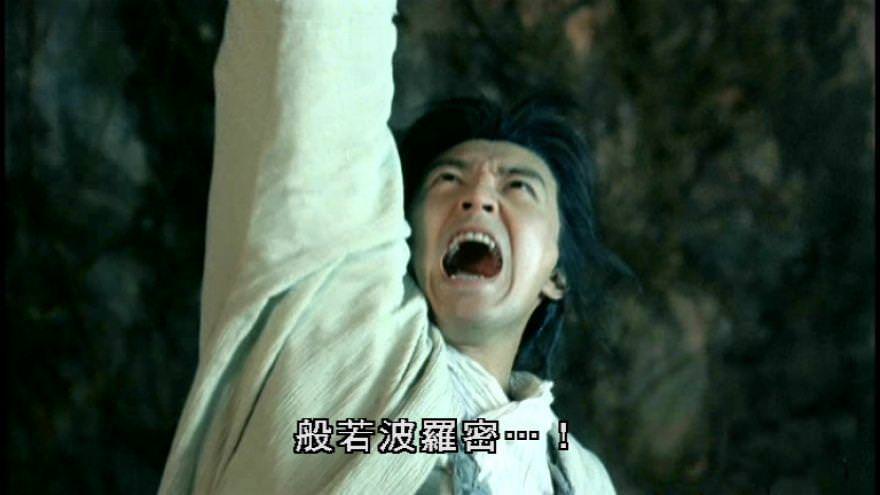Ligor: Linking the Malay satelites in a Thai solar system
. . . it starts with confused Malay traditions of the great empires of Byzantine and China, of Sri Rama and Hanuman and Lankapuri लङ्कापुरी from the Ramayana . . . as a Muslim, the author drags in the Prophet Solomon, king of the animal world and so lord of the Garuda . . .
Richard Winstedt (1938)
The Kedah Annals, JMBRAS 16(2), p. 31
Before Bangkok’s full consolidation of the south, Ligor was the primus inter pares among the southern mueang. It had long served as the southern gate of the Siamese world, a tributary overlord to the smaller Malay states, Trang, Patthalung, Salang, Krabi, Patani, Kelantan, Terengganu, Kedah, etc.
These Malay planets tended to orbit around Ligor, which functioned as the regional mandala-center mediating between Bangkok and the Malay world. This Ligor-centered arrangement was, however, semi-feudal and decentralized, giving the Buddhist state enormous leverage.
When the Chakri kings sought to centralize the Siamese polity, they recognized that Ligor’s preeminence gave it dangerous autonomy, since the Malay states under its shadow might identify more with the Ligor mandala than with Bangkok. When the British expansion from Penang and Perak made Bangkok uncomfortable, the Siamese decided to deliberately cultivate Singora as a counterweight, a second mandala-center, in the deep south.


When Prince Damrong (b. 1862, d. 1943) initiated the Thesaphiban experiments in 1893, the traditional mueang were reorganized into monthon (mandala or political sphere). Ligor ليݢور became Monthon Nakhon Si Thammarat, and Singora سڠڬورا became Monthon Songkhla, both directly answerable to Bangkok, not to each other. The creation of Monthon Songkhla effectively broke Ligor's monopoly and allowed Bangkok to supervise the Malay principalities directly (e.g. Patani, Yala, Narathiwat). This was a classic divide-and-centralize move, disentangling Malay dependencies from Ligor’s orbit and attaching them instead to Bangkok’s gravitational field through Songkhla.
- Geography and demography made Singora ideal since it is closer to Patani and Kedah, the frontier Malay provinces and it had a mixed Thai-Malay population, more open to direct Bangkok administration. Since its rulers (the Na Songkhla family) were ethnic Chinese-Thai, personally loyal to the Chakri court, it could serve as a Bangkok-loyal bridge between the Thai core and the Malay periphery, unlike Ligor’s ancient aristocracy.
- During the period of Anglo–Siamese tension over the northern Malay states, the British sought to clarify whether Kedah owed allegiance to Siam or could rightfully claim independent sovereignty. An EIC officer named James Low (b. 1791, d. 1852) was tasked with gathering political and cultural evidence to assess Kedah’s position since he was proficient in both Malay and Thai.
When Low met the Sultan of Kedah and his court officials in Penang, he requested proof that Kedah had historically been an independent Malay kingdom rather than a vassal of Siam. Instead of treaties or inscriptions, the palace presented him with their dynastic chronicle, the Hikayat Marong Mahavamsa. In Malay political culture, such hikayat were not mere literary works but charter myths, texts that legitimize royal descent and sanctify sovereignty through cosmic genealogy. The Hikayat recounts that the progenitor, the Byzantine prince Marong Mahavamsa (sometimes linked to Dhu al-Karnain), founded the ancient kingdom of Kedah or Lankasukha. His descendants later established Siam, Patani, and Perak, brother realms born of the same divine lineage.

In this cosmological framework, Kedah was not subordinate to Siam; both were siblings within a shared planetary system Yet in the larger political cosmos, the Malay polities revolved around regional centers of gravity, with Ligor serving as their traditional sun, even as Bangkok’s expanding power began to exert the stronger gravitational pull. Within that shifting orbit, the Hikayat offered Kedah’s claim to equality: in the Malay universe, shared descent meant shared sovereignty.

- The Patani-Kelantan gold coin exemplifies a sophisticated fusion of Islamic (العادل, al-Adil) and Indic motifs, most notably the sacred bull (given that the Naksat นักษัตร zodiac sign for Patani is an ox, 子丑寅卯辰巳午未申酉戌亥). Linehan (1934) initially identified the animal depicted on the coin as a barking deer, or kijang. However, given the northern Malay states’s assimilation of Indic elements, the figure is more plausibly a sacred bull (Bos indicus) from India, as Rentse (1939) first suggested.
Additionally, the coin was likely modeled on those issued by the Vijayanagara kingdom, which originally bore the image of a wild boar, a moon, a sun, and a Vijayanagara katar (which is likely the source element for the ‘salivary flow' described by Rentse (1939) and Singh (1986)).

See A. Rentse (1939) Gold coins of the North-eastern Malay States, Journal of the Malayan Branch of Royal Asiatic Society 17(1), pp. 88 - 97, Saran Singh (1986) The Encyclopedia of the coins of Malaysia, Singapore, and Brunei 1400 - 1967, Malaysia Numismatic Society, Kuala Lumpur, p. 233.
 The Patani gold coin can also be found in Muzium Negara.
The Patani gold coin can also be found in Muzium Negara.

The seal of the Kakatiya king Prataparudra, which features Vahana the boar, Nandi the sacred bull, the moon, the sun, and a royal sword.

- In the Naksat system, Kelantan is represented by a tiger 子丑寅卯辰巳午未申酉戌亥. The old Kelantan flag actually features a calligraphic tiger. The image appears in the article “The Flags of the Malay Peninsula”, Journal of the Straits Branch of the Royal Asiatic Society, Vol. 75 (April 1917), pp. 3 - 4.
The author notes: . . . as far as can be ascertained, the flag of Kelantan was plain white up to the time when the State came under British Protection. Being white, it would not be distinctive as regards Terengganu. After the State had come under protection (i.e. in 1909, and thus the flag is a twentieth- rather than a nineteenth-century flag), a figure of a tiger was added at the centre of the flag, coloured dark blue for the State flag and yellow for His Highness the Sultan’s personal flag, while the ground remained white as before . . .

The inscription on the flag, written in Arabic script, reads Kerajaan Kelantan كراجأن کلنتن followed by the Quranic verse نَصْرٌ مِّنَ ٱللَّهِ وَفَتْحٌۭ قَرِيبٌۭ وَبَشِّرِ ٱلْمُؤْمِنِينَ — nasrun mina Allāhi wa fatḥun qarībun wa bashshir al-Mukminīn (Help from Allah and a near victory; give good tidings to the believers, Al-Saff 61:13). The tiger depicted on the flag was likely inspired by the popular Ottoman calligraphic motif known as the Lion of Ali, a stylized zoomorphic design embodying both calligraphy and symbolism.
See also P. G. Riddell (2017) Malay court religion, culture and language: Interpreting the Quran in 17th century Aceh, Brill, Leiden and Boston.
- Around 1474, Kedah witnessed the conversion of Phra Ong Mahawangsa, who took the name Sultan Muzaffar Shah. It is unclear whether his decision was influenced by the earlier reign of Sultan Muzaffar Shah of Melaka (r. 1445 – 1459). Sultan Muzaffar of Melaka was the first Muslim ruler there, rising to power after emerging victorious (i.e. muzaffar مظفر) in court politics that ended the brief reign of his half-brother, Sri Parameswara Dewa Shah (d. 1445).
- Both Nik Hassan and his student incorrectly conflated the two lost volumes of Chitu Guo Ji 赤土國記 (writen by Chang Jun 常駿 and Wang Junzheng 王君政) with the account of Chitu found in the Book of Sui 隋書 (edited by Wei Zheng 魏徵, 卷八十二列傳第四十七 · 南蠻 · 赤土). In Zuliskandar (2013), the name of the book was cited 8 times, but three of which are misspelled (Chi tu gou ji, p. 1, Chi ti gou ji, p. 12, Chih tu go uji, p. 13). Although Zuliskandar cited Wheatley (1961), he seems not to have read Wheatley's discussion with sufficient care. Wheatley clearly recognized that Chang Jun's work is lost, and that it survives only as a bibliographic entry in the New Book of Tang (Fascicle 58). He then did the reasonable thing by assuming that some of Chang Jun's material may have been preserved via Wei Zheng's compilation.
See Nik Hassan Shuhaimi Nik Abdul Rahman (1998) Chi Tu: An inland kingdom in Nik Hassan Shuhaimi Nik Abdul Rahman (ed) The Encyclopedia of Malaysia, Volume 4: Early History, Archipelago Press, Singapore, pp. 68 - 69. Zuliskandar Ramli (2013) Kerajaan Chih-Tu: Kerajaan awal yang wujud di Negeri Kelantan, Warisan Kelantan 32, pp. 1 - 16. Paul Wheatley (1961) The Golden Khersonese, University of Malaya Press, Kuala Lumpur, p. 26.




Comments